If you’re looking for one of Peruvian folk art's most authentic and iconic expressions, the Retablo Ayacuchano is a piece you simply can’t miss. This stunning artistic tradition, deeply rooted in Peru’s history, has been officially recognized as a "Cultural Heritage of the Nation" for its symbolic, cultural, and aesthetic significance.
Far beyond being just a craft, the retablo Peru results from centuries of evolution. It reflects the fusion of pre-Hispanic beliefs with elements introduced by Spanish colonizers during the Viceroyalty. Each retablo tells a story, portraying religious, festive, and everyday scenes that have been passed down through generations, becoming a vibrant expression of Andean identity.
Keep reading to explore how this artisanal tradition has remained relevant, captivating collectors and travelers from around the globe.
What is the Retablo Ayacuchano?
The retablo ayacuchano is one of the most emblematic forms of Peruvian folk art. Known for its vivid colors, profound symbolism, and strong cultural ties to the Ayacucho region, these handcrafted pieces are created with exceptional care and passed down through generations. They beautifully showcase Andean identity through religious, traditional, and festive scenes.
Origins and history of the Retablo Ayacuchano in Peru
The retablo arrived in Peru with Spanish missionaries, who used it as a key tool for evangelization. Initially, these were small portable altars in the form of boxes containing figures of saints and Christian imagery, designed to spread faith in remote and hard-to-reach areas.
These mobile altars originated during the conquest and colonial periods. However, Ayacucho artisans not only adopted Spanish techniques but also infused them with their cultural heritage, creating a unique art form that embodies Andean identity.
Over time, the meaning of retablos expanded beyond religious purposes. Starting in the 1940s, Ayacucho artisans began depicting scenes from everyday life. Elements such as traditional dances, bullfights, patron saint festivals, and cockfights became common in their colorful compositions. Patriotic themes also found their way into retablos, adding greater cultural and artistic value to these intricate pieces.
Additional Information » Today, the Ayacucho retablo stands as an artistic expression that preserves local traditions while continuing to evolve. Its beauty and symbolism have crossed borders, making it a true icon of Peruvian folk art.
Characteristics of the Retablo Ayacuchano
Ayacucho retablos are crafted primarily from cedar wood, with a traditional rectangular shape. While there isn’t a standard size, a common dimension is 32 centimeters tall by 26 centimeters wide with the doors open.
Inside, the retablos feature hand-sculpted figures, made from a special mixture of ceramic plaster, sifted powder, and boiled potato, allowing artisans to shape intricate details with precision. The back is typically reinforced with a thin wood panel, and the doors are fitted with leather hinges, ensuring both durability and flexibility.
The content of retablos Ayacuchanos is diverse and vibrant, showcasing scenes that encapsulate the essence of Andean culture. Common themes include religious festivities, traditional dances, agricultural practices, and everyday life in Ayacucho. Additionally, artisans often incorporate themes from other parts of Peru, expanding the artistic and cultural reach of these works.
Today, these pieces are cherished not only for their aesthetic and symbolic value but also for their role in preserving the cultural identity of the Peruvian Andes, earning admiration both nationally and internationally.
The Retablo in modern times
In recent years, retablos ayacuchanos have evolved beyond their traditional role, becoming a mirror of Peru’s complex history. These pieces of folk art not only celebrate beauty and cultural identity but also serve as deeply personal expressions that merge sculpture and painting to tackle themes like pain, historical memory, and social struggles.
For younger generations of artisans, the retablo in Ayacucho has become a medium to document and preserve the memory of Peru’s internal conflict during the 1980s and 1990s. Through these intricate compositions, stories of resistance, resilience, and hope are vividly told, offering a visual means of understanding the impacts of violence on Andean communities.
Today, retablos continue to adapt to modern social and cultural changes, serving as a platform for expressing issues such as social inequality, justice, and new perspectives on life. This transformation has solidified the retablo Ayacuchano as a tool for dialogue and reflection, ensuring that this tradition remains alive and relevant as it evolves with time.
How to identify a Retablo en Perú?
To recognize an authentic retablo Ayacuchano, pay attention to these key aspects:
1. Traditional materials
- Cedar or maguey wood: Used for the structure, providing durability and rustic finishes.
- Hand-modeled figures: Made from a mix of ceramic plaster, boiled potato, and glue, ensuring detailed craftsmanship.
- Leather hinges: Instead of metal, these enhance the artisanal authenticity of the piece.
2. Artistic details
- Intricate Andean scenes: Realistic depictions of daily life, religious ceremonies, and festivals.
- Vivid, harmonious colors: Reflecting the vibrant culture of the Ayacucho region.
- Expressive figures: Each character is crafted with carefully defined facial expressions and gestures.
3. Traditional themes
- Representations of festivities, agricultural work, and Andean spirituality.
- Narratives that embody the cultural identity of Ayacucho and its people.
4. Artisan’s signature
Authentic retablos are often signed by the artisan, ensuring their originality. Look for the signature on the back or base of the piece.
5. Point of purchase
Buy from artisan fairs, certified stores, or directly from recognized artisans to ensure authenticity and quality.
Cultural importance and recognition
The retablo Ayacuchano offers a glimpse into the rich customs and traditions of Peru’s Andean world. Each piece reflects the cultural and historical wealth of the region, serving as a tangible testament to Ayacucho’s artisanal legacy. These retablos combine art, symbolism, and craftsmanship to highlight the identity and exceptional talent of their creators.
Due to its profound cultural significance, the Ayacucho Retablo has been declared Cultural Heritage of the Nation by Peru’s Ministry of Culture. This recognition honors its "originality and enduring production system, characterized by the fusion of sculptural modeling and pictorial harmony, as well as the creativity of its artisans in continuous interaction with their environment."
Frequently asked questions about the Retablo Ayacuchano
What does the retablo in Peru symbolize?
The retablo Ayacuchano is an artistic representation filled with cultural, religious, and historical symbolism. Originally, it served a religious purpose and was used by Spanish missionaries during evangelization to spread Christian faith among Andean communities. Over time, Ayacucho artisans infused the retablos with their customs and traditions, turning them into a unique form of expression.
Who is the creator of the Retablo Ayacuchano?
The artisan who consolidated and popularized this art form in the 20th century is Joaquín López Antay, recognized as the leading exponent and pioneer of the contemporary Ayacucho retablo.
What types of retablos are there?
- Religious retablos
- Costumbrista (traditional life) retablos
- Historical and social retablos
- Festive and folkloric retablos
- Protest and social critique retablos
What are the most common colors in retablos ayacuchanos, and what do they represent?
Ayacucho retablos use a vibrant palette, with each color carrying a specific meaning:
- Red: Represents life, passion, and strength.
- Yellow: Symbolizes prosperity, the sun, and abundance.
- Blue: Reflects spirituality and protection.
- Green: Represents nature, fertility, and hope.
- White: Stands for purity and faith.
- Orange: Evokes joy, celebration, and enthusiasm.
How do you maintain and preserve a retablo Ayacuchano over time?
To preserve a retablo Ayacuchano:
- Keep it in a dry place, away from direct sunlight to prevent fading.
- Clean it gently with a soft, dry cloth, avoiding chemical cleaners that could damage the paint and natural materials.
How did religion influence the creation of the retablo Ayacuchano?
Religion played a crucial role in the development of the retablo Ayacuchano. Spanish missionaries introduced it as portable altars to aid in evangelizing Andean communities. Over time, local artisans combined Christian elements with their Andean worldview, creating a unique blend of faith and cultural tradition.
A fusion of Andean tradition and cultural heritage
The retablo Ayacuchano stands as one of Peru’s greatest artistic achievements. It represents the harmonious fusion of the original artistic heritage of the Andean people with the influences brought by Spanish colonizers.
This incredible art form is one of the many reasons to visit Peru, the land of the Inca Empire and countless other cultures. Experiencing the retablo Ayacucho in its full social and artistic dimension is an unforgettable experience for any traveler.
When you finally see these retablos up close, it’s hard to resist taking one home as a testament to their profound artistry, history, and symbolism—a true masterpiece of human creativity.

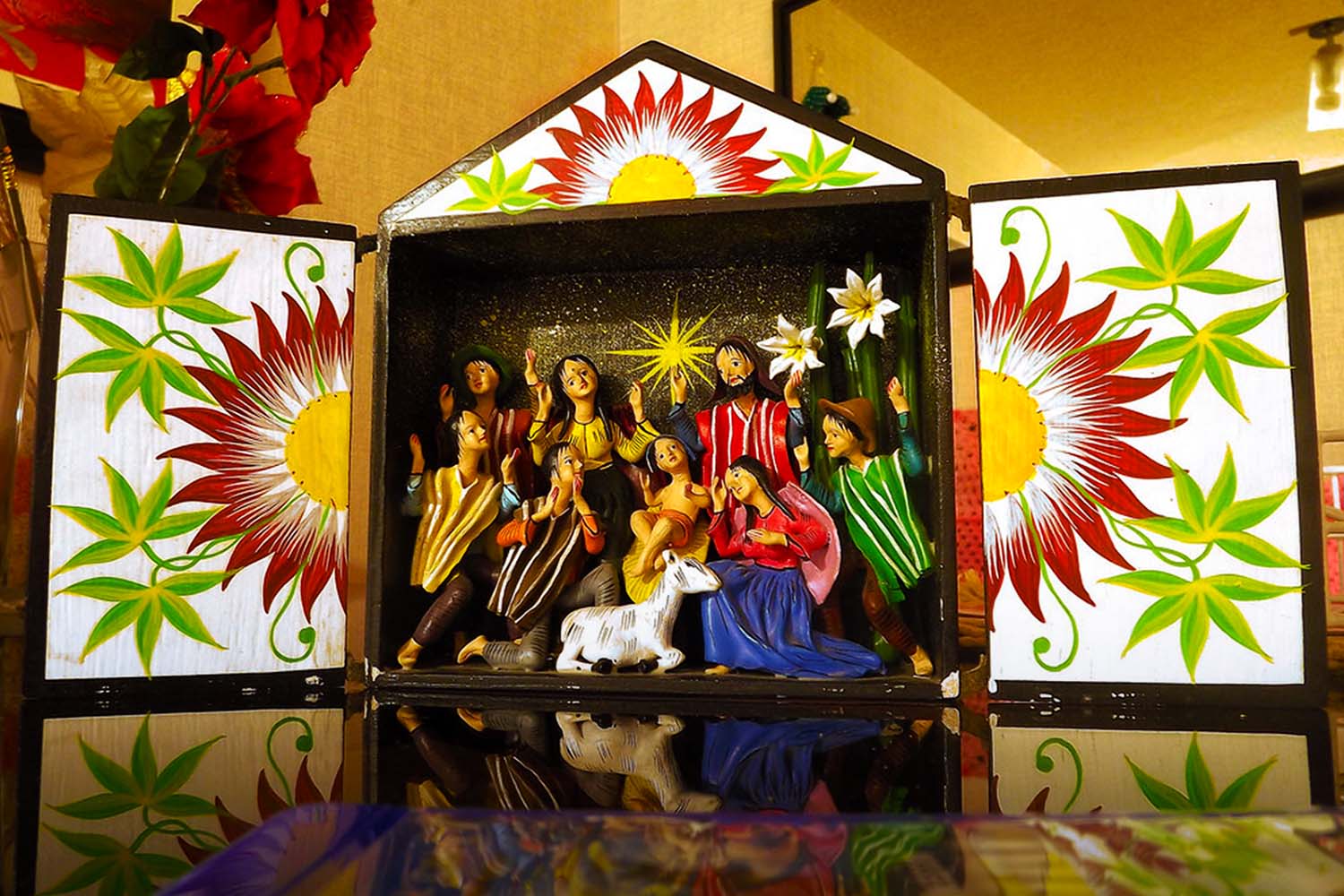
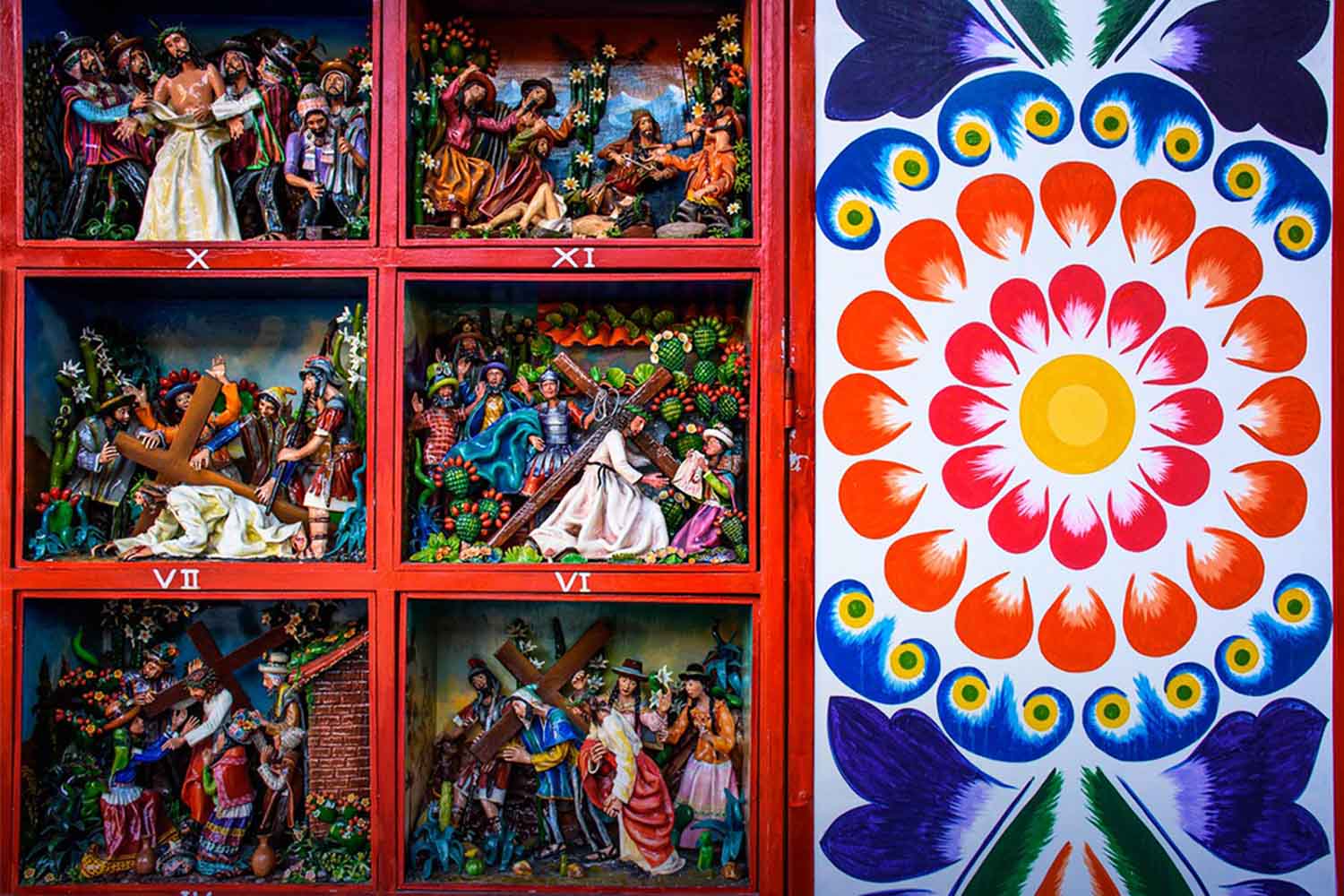
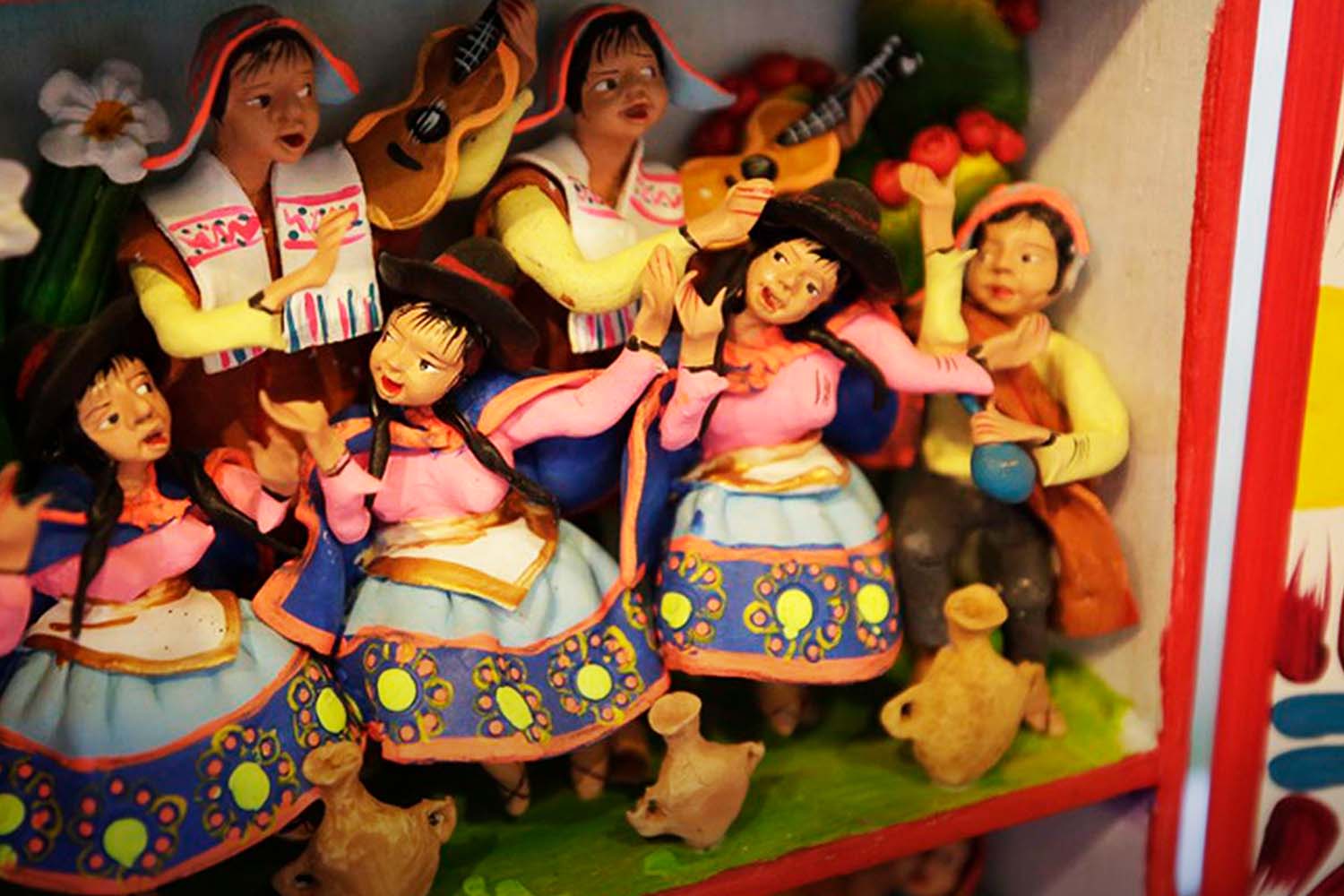

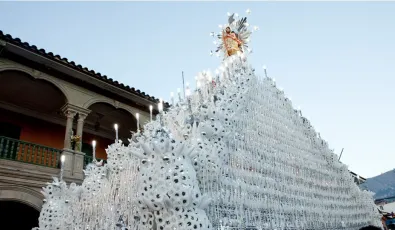
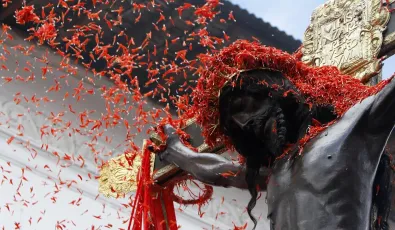
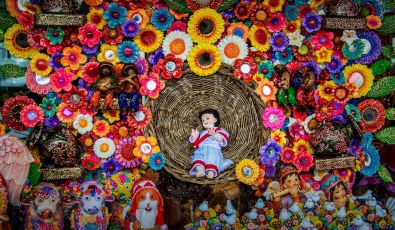
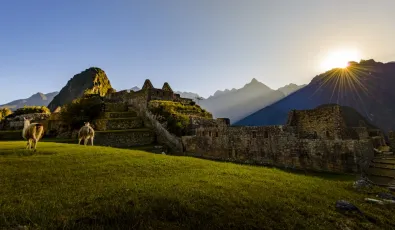


Add new comment